The Intersection of Science and Wellness
In the modern wellness world, the demand for effective treatments that deliver real, measurable results is growing. More than just luxury pampering, today’s wellness enthusiasts seek scientifically-backed solutions that help rejuvenate the body and mind. One such method that bridges this gap is the AXO Method, a regenerative massage technique designed to not only relax the body but also promote healing and long-term physical well-being. This article delves into the science behind the AXO Method, explaining how it combines cutting-edge regenerative techniques with holistic wellness practices to optimize health.
The Science of Regenerative Wellness
Regenerative wellness is a relatively new and rapidly evolving field that focuses on the body’s ability to repair, regenerate, and heal itself using natural methods. Regenerative medicine, traditionally associated with stem cells, growth factors, and cellular therapies, has inspired new wellness treatments that focus on enhancing the body’s natural regenerative processes.
The AXO Method integrates principles of regenerative medicine with manual therapies, targeting the body’s self-healing mechanisms. The idea is to create an environment where tissues—particularly muscle, fascia, and connective tissue—can recover faster and more efficiently, without the need for invasive procedures.
Key Scientific Concepts Behind the AXO Method
- Fascia and Its Role in Wellness
- Fascia is a network of connective tissue that surrounds muscles, bones, and organs, playing a key role in movement, flexibility, and overall body function. Recent studies have shown that fascia is not just a passive structure, but an active player in body mechanics and health. Researchers like Dr. Carla Stecco, a leading expert in fascia, have demonstrated that manipulating fascia can improve muscle performance, reduce pain, and even promote circulation.
- The AXO Method uses targeted massage techniques to release tension in the fascia, improving flexibility and circulation, thus encouraging the body’s natural healing processes.
- Autonomic Nervous System (ANS) Regulation
- The autonomic nervous system (ANS) controls involuntary functions in the body, such as heart rate, digestion, and respiratory rate. It is divided into the sympathetic (fight-or-flight) and parasympathetic (rest-and-digest) systems. Regulating the balance between these two branches of the ANS is crucial for health.
- Studies have shown that massage therapy can help regulate the ANS, reducing stress and promoting relaxation by stimulating the parasympathetic nervous system. This is a core principle of the AXO Method, which encourages relaxation, stress reduction, and recovery through its regenerative massage techniques.
- Cellular Regeneration and Circulation
- Cellular regeneration is the process by which cells repair themselves after damage. This process is critical for healing injuries, reducing inflammation, and maintaining overall health. In the case of muscle recovery, better circulation means more oxygen and nutrients delivered to the cells, which speeds up healing.
- The AXO Method combines deep tissue manipulation with techniques that encourage lymphatic drainage and improve microcirculation, helping tissues recover and regenerate faster. By increasing blood flow, the method supports the body’s ability to flush out metabolic waste and deliver essential nutrients to the cells.
- Myofascial Release and Pain Reduction
- Myofascial release (MFR) is a manual therapy technique used to relieve pain and restore movement by targeting the fascia and muscles. Research has shown that MFR can help alleviate conditions like chronic pain, fibromyalgia, and muscle stiffness by releasing restrictions in the fascia and improving flexibility.
- The AXO Method integrates myofascial release as part of its approach, aiming to reduce muscle tension, alleviate pain, and improve mobility by addressing both superficial and deep layers of fascia and muscle.
Practical Applications of the AXO Method
- Rehabilitation and Injury Prevention
Athletes and fitness enthusiasts can benefit greatly from the regenerative techniques of the AXO Method. By improving tissue flexibility, circulation, and reducing muscle tightness, the method not only helps with recovery but also serves as a preventative measure against injuries. Research has demonstrated that improving flexibility and muscle balance can lower the risk of injury in high-performance athletes. - Stress Relief and Enhanced Sleep
The method’s emphasis on relaxing the body’s nervous system has significant benefits for those experiencing high levels of stress or suffering from insomnia. Studies indicate that relaxation techniques, particularly those that stimulate the parasympathetic nervous system, can lead to better sleep quality and faster recovery from fatigue. - Chronic Pain Management
For those with chronic conditions such as lower back pain, neck tension, or fibromyalgia, the AXO Method provides a natural alternative to pharmaceuticals. Studies indicate that therapeutic touch and manual therapies like the AXO Method can significantly reduce pain levels and improve quality of life for chronic pain sufferers.
Bridging Science and Holistic Wellness
The AXO Method is a perfect example of how modern science and traditional holistic techniques can be harmoniously integrated to enhance wellness. By focusing on fascia, the autonomic nervous system, cellular regeneration, and pain relief, the AXO Method provides a scientifically-informed approach to massage therapy that promotes both immediate relaxation and long-term healing. As more research continues to validate the benefits of these techniques, the AXO Method will continue to offer a cutting-edge solution to those seeking optimal physical and mental well-being.
References
- Stecco, C., & Stecco, A. (2015). Fascia in the Human Body: Implications for Treatment and Function. Elsevier.
- Field, T. (2014). Massage Therapy Research. In Massage Therapy: A Comprehensive Guide (pp. 199-214). Elsevier Health Sciences.
- Finkel, T., & Holbrook, N. (2000). Oxidants, Oxidative Stress, and the Biology of Aging. Nature.
- Myers, T. (2014). Anatomy Trains: Myofascial Meridians for Manual and Movement Therapists. Elsevier Health Sciences.




Comments are closed